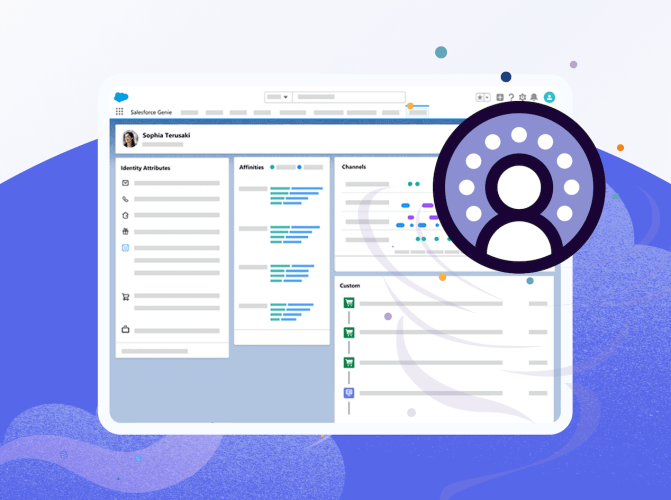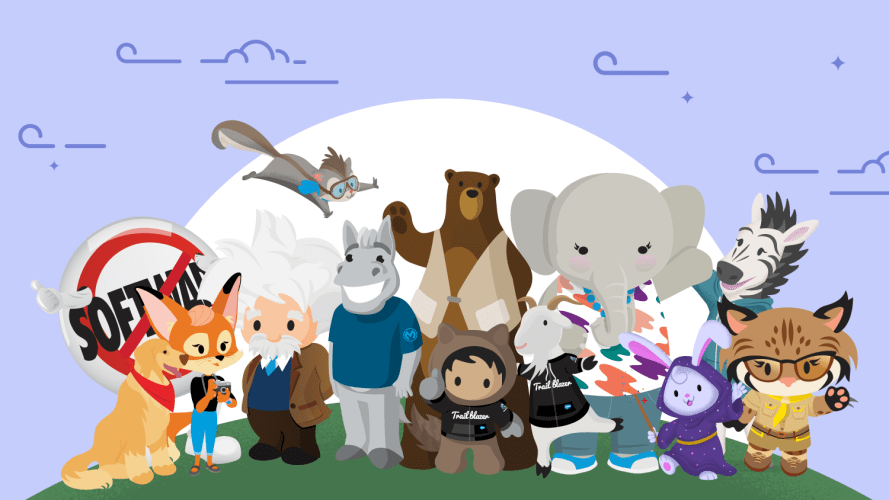Workforce Management is Outdated – 4 Ways AI and Automation Can Help



Learn how innovation helps agents solve cases the first time and improves their workplace experience.

Mayte Zavaleta
Many workforce management solutions in the contact center are outdated and urgently in need of an upgrade. Amid ongoing disruption, customer expectations have skyrocketed. To keep up, contact centers have had to make changes, including the technology used to manage their workforces. The latest State of Service report reveals that 78% of decision-makers have invested in new technology in this disruptive time. Clearly, the right technology to manage your contact center workforce matters in the work-from-anywhere world.
Fortunately, advances in artificial intelligence (AI), machine learning (ML), and customer-service process automation make it possible to manage your contact center and your workforce better than ever. Here are four ways AI, machine learning, and automation power a more efficient contact center for a better customer experience:
Deliver demand forecasting accuracy with AI
In the past, contact centers used demand-forecasting tools with algorithms based on historical data. But in the face of wild disruption, those historical-based forecasting tools no longer work. As technology evolves, artificial intelligence and machine learning will help contact centers forecast demand and plan capacity in a responsive, more accurate way.
Today, sophisticated workforce management technology like Salesforce’s Workforce Engagement analyzes what’s happening across your contact center, helping you spot overstaffing or staffing gaps. You can forecast both volume and handle times based on either queues or skill sets. You then assign the right experts for your shift. This helps you balance customer demands with business goals, so you don’t overrun on costs.
As the technology evolves with AI and machine learning, these capabilities become even more useful. For instance, you might start your forecast for the year with a scenario that’s more reflective of 2020, or another that’s more aligned with 2019. Then through the power of AI and machine learning, technology learns from what’s happening in real-time, and adapts to changing conditions to help your forecasting models become more and more accurate.
When combined with omni-channel routing – which automatically routes cases to the most appropriate, available employee no matter which channel the customer used to reach out – AI and machine learning becomes even more powerful. In the future, AI will speed up forecasting and planning across channels (including bots and asynchronous channels like email) and make the whole process more robust. A better forecast and plan improves the customer experience, because the right agents are more quickly available to help.
Improve capacity planning with AI and machine learning
Artificial intelligence and machine learning have the potential to help you anticipate the future — and then improve it — when combined with powerful simulation models for capacity planning.
Today, the operational reporting in Workforce Engagement measures your business outcomes — during the shift and after. If there are unexpected gaps in coverage, longer wait times, abandoned calls, or distracted agents, you can create simulation models specific to your business goals. These models help you figure out how to tackle problems and optimize performance.
In the future, you can create a simulation model by channel, skills, or agent location to play out how different situations would affect your outcomes. Test “if this, then what?” scenarios with simulations to plan for the variables you most care about, like average handle time, shrinkage, service-level agreements, or capacity allocation per channel.
With time, adding a layer of AI to these capacities will drive contact center effectiveness. Simulation models already help you learn what needs to change, make those changes, and improve the experience for your customers. AI has the potential to make this process faster and more potent.
Solve cases the first time with AI and automation
Artificial intelligence also helps improve your contact center through the automation technology that makes omni-channel routing possible. Automated omni-channel case routing isn’t just something you set up once. It’s a solution you learn with to continuously improve.
For example, planners can analyze your routing rules to see what’s working and what’s not. When you identify gaps, you can change the rules. In the future, you’ll be able to create a simulation to see how new rules would affect performance before you change them. Armed with these insights, you can choose routing rules and capacity models that lead to faster, higher-quality work.
When cases more frequently reach the agent with the right skills to help the customer, first call resolution rises. Whether your objective is higher first call resolution, greater customer satisfaction, or reduced employee attrition, AI and automation help you improve workforce management, employee experience and customer experience.
Create a better employee experience with AI and automation
Seventy percent of executives say an improved employee experience leads directly to improved customer experience, according to Forbes Insights Research. And 91% of customers say that a positive service experience makes them more likely to buy again, according to Salesforce’s State of the Connected Customer report. Improving the employee experience ultimately benefits your bottom line.
AI and automation make a better employee experience possible. Yes, these tools are often positioned as threats to jobs — and they can be. But the promise of AI and automation is that they make work better, even more human. They relieve people of tedious tasks, allowing them to use higher-level skills like empathy and strategic thinking more often. They also free up time for career development.
With Workforce Engagement, you can improve the employee experience by delivering skills training through the same technology that makes omni-channel case routing possible. Use Workforce Engagement to route bite-size training modules — just as you route cases — to agents so they can learn during downtime between customers. That way, support teams expand their skills and you build the workforce you need.
For planners, building a shift plan becomes more satisfying thanks to algorithms that help them optimize the shift. Workforce Engagement shows planners how well each agent fits a shift based on their skill sets and availability preferences. That insight isn’t possible with spreadsheets or less robust technologies. Instead of having to synthesize data, planners can react to the trends they are seeing in the data and make judgements based on their expertise.
For agents, the employee experience is better due to more flexible scheduling. Agents can pick full shifts, or split shifts — two or four hours that align with their childcare situation or other competing demands. They can also choose which channel to receive customer inquiries. For example, a working parent can select to answer emails instead of calls while their infant naps. In the work-from-anywhere world, this kind of flexibility drives employee loyalty.
Connect your workforce management planning
Unify your service planning, process, and people with the right technology to deliver exceptional customer service with Salesforce’s Workforce Engagement.


























